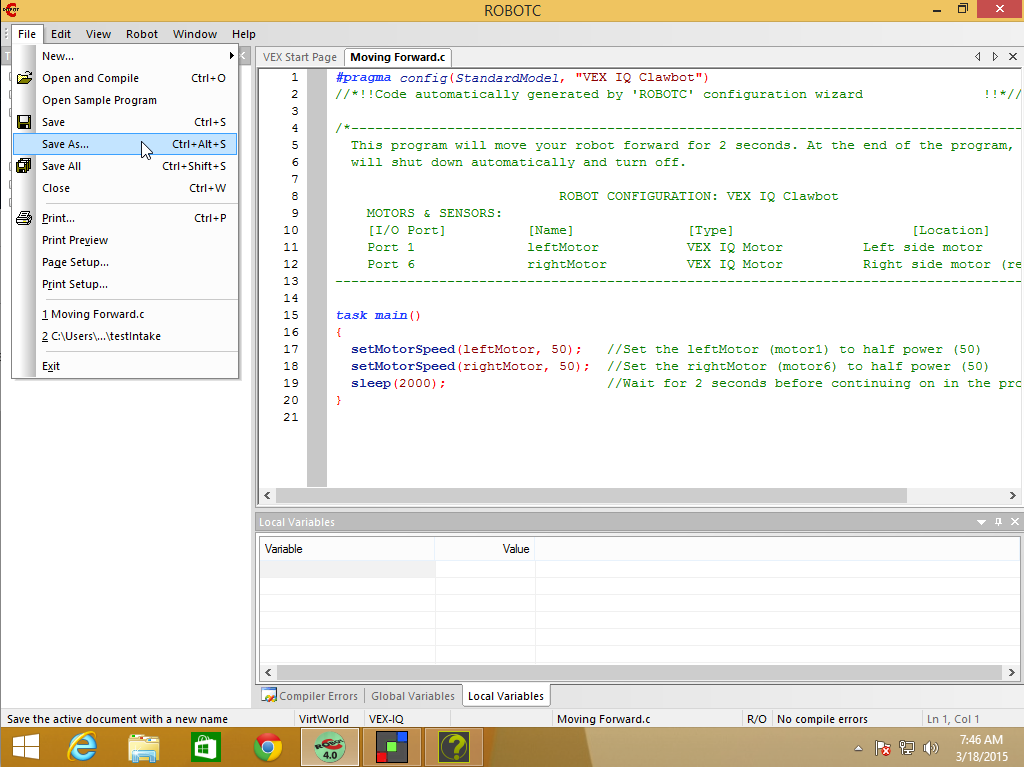

With their former years of robotics and programming experiences, across a systematic continuum of engineering systems, students were already well versed in If-Then Statements, Switch Cases, While Loops, etc. Pondering this notion, it occurred to us that we could provide our young students the “familiar and scaffolded context” of reconstructing NXT robots, challenging them to ultimately solve for the same exact missions our students originally and proficiently programmed in NXT in their fourth grade year, re-programming in RobotC, in the beginning of their fifth grade year.Īs it turns out, our young students exceeded all expectations, easily grasping the new programing concepts, skills, and requirements for successfully completing the PBL ( project-based learning) tasks and challenges they were able to solve for. Just a couple of weeks before the start of school, we became inspired to teach RobotC programming after several local teachers and robotics coaches shared their concerns with us about the need for students to learn high level and industry-standard programming well before their high school years. students at Allendale Columbia School were initially perplexed by some very new terminology, concepts, and programming requirements, it didn’t take long to see that our elementary grade students were up to the challenge of learning an industry-standard, text-based programming language typically taught at the high school and college levels: RobotC. What?! No graphical programming icons? We have syntax errors in our code? What’s the deal with all the curly braces, brackets, and semicolons? Did we hear pragma statements? You want to know our pseudo code?
#TEACHING ROBOTC SOFTWARE#
If you can get your students to think through the logical step-by-step process (think flowcharting), then most every programming software is about the same, whether it be Sinclair (or TRS-80) Basic, Fortran 77, Pascal, Robot C, or C#, the skill that needs to be created, and will “transfer” from program to program, is the process of programming.įor the longer term, in our organization we steer the young IQ kids to graphical, encourage the MS IQ to switch to text, while the advanced HS and our U-team tend towards PROS.Programming in RobotC – Starting in the Lower School Grades Posted on November 20th, 2014 by ssorrentino 50% of the students may never program again for years so the thing that is most important is not the program itself (that is, the syntax, commands, ,) but the thought process that goes into programming.

You’ll probably be changing every couple years anyway.
#TEACHING ROBOTC FREE#
Our camps were shut down last year, but before that we were using RobotC with the Carnegie Mellon free online curriculum. Regarding the particular programming language, it really doesn’t matter: do what is easiest to work with for you for this year. If using robots in “Programming Camp”, they should be simple (build in half a day, then get to the programming), or be pre-built. “Programming Camp” on the other hand would be expected to be more programming/syntax. The goal of a beginning camp should be to build, operate, and program robots as quickly as possible, while learning the mechanical details like speed, torque, gear ratios, etc, without being bogged down by learning text-based syntax. “Robotics Camp” should be about robots, which involves both mechanical and programming aspects. Here’s what I would do with regard to week-long summer camps:īeginning “programming” camp: graphical for elementary, text for MS/HSĪdvanced “robotics” camp: graphical for elementary, text for MS/HS


 0 kommentar(er)
0 kommentar(er)
